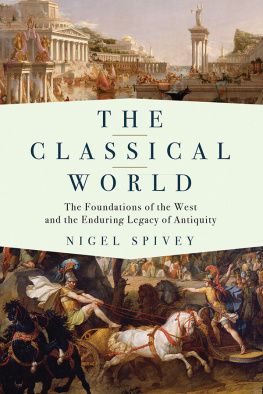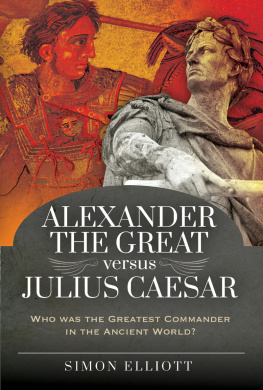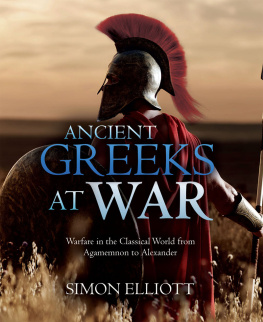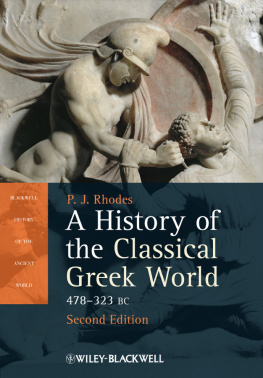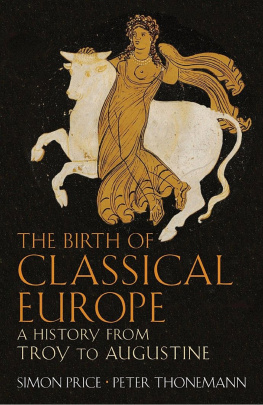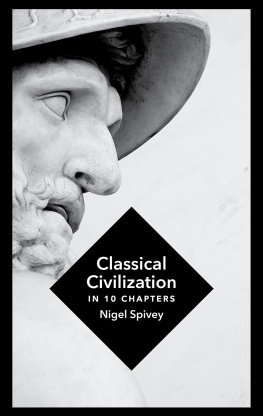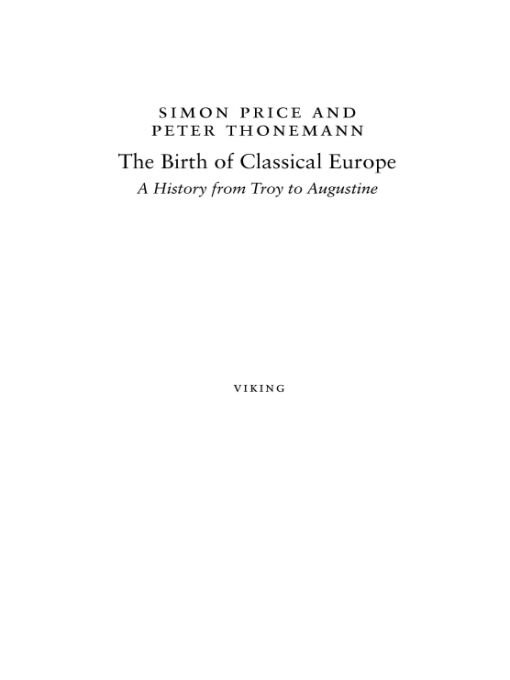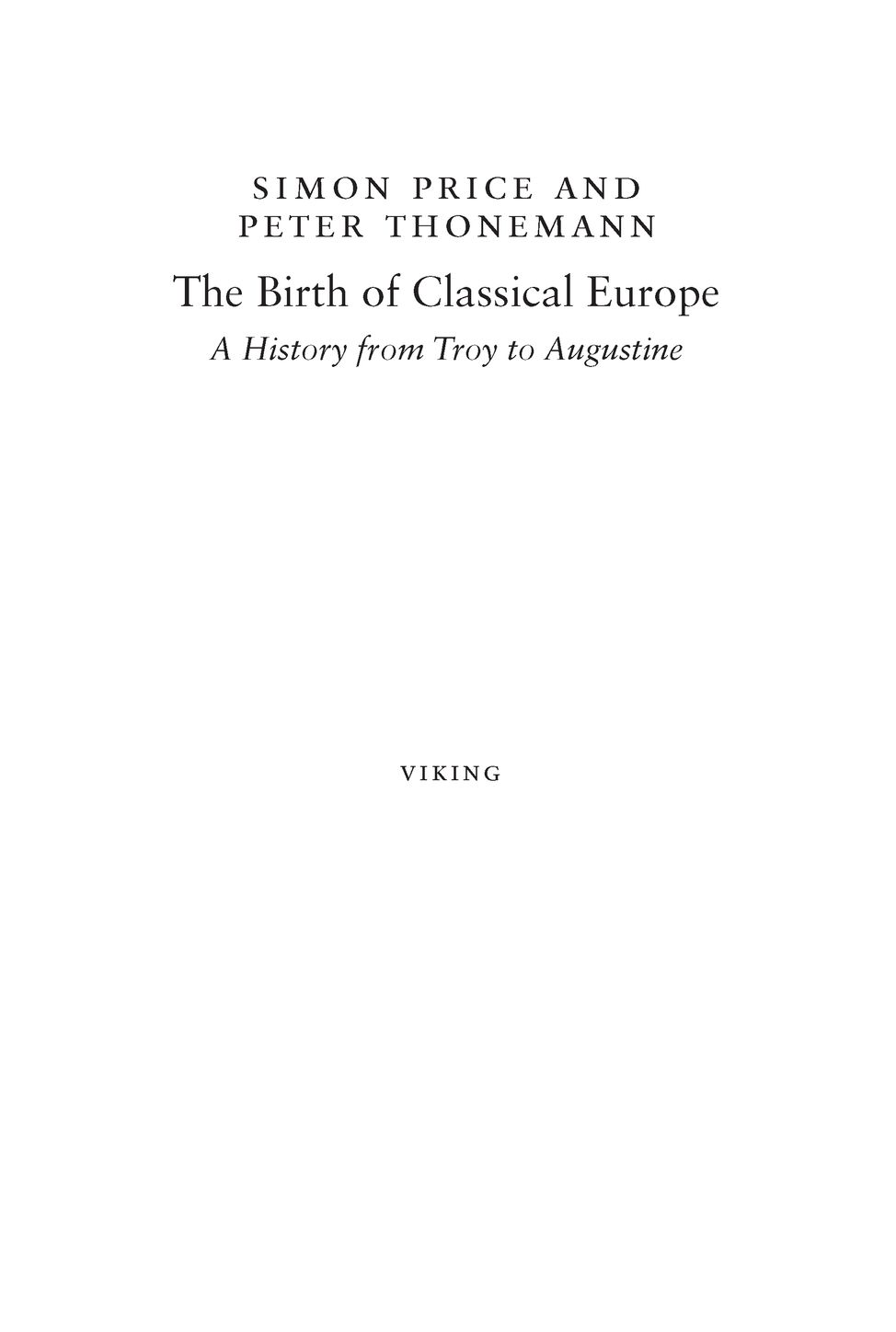Table of Contents
THE PENGUIN HISTORY OF EUROPE
General Editor: David Cannadine
I: SIMON PRICE AND PETER THONEMANN
The Birth of Classical Europe: A History from Troy to Augustine*
II: CHRIS WICKHAM The Inheritance of Rome:
A History of Europe from 400 to 1000*
III: WILLIAM JORDAN Europe in the High Middle Ages*
IV: ANTHONY GRAFTON Renaissance Europe, 1350-1517
V: MARK GREENGRASS Reformation Europe, 1515-1648
VI: TIM BLANNING The Pursuit of Glory: Europe 1648-1815*
VII: RICHARD J. EVANS Europe 1815-1914
VIII: IAN KERSHAW Twentieth-Century Europe
*already published
Acknowledgements
We are most grateful to those who have read individual chapters, or even the whole book: Michael Crawford; John Day; Peter Hainsworth; Irene Lemos; Elizabeth Nixon; Lucia Nixon, whose influence on the book is pervasive; Miranda Nixon; John North; Cynthia Shelmerdine; Philip Thonemann; Sarah Thonemann; and Roger Tomlin.
We are indebted to those who have helped us with excursuses on uses of the classical past: Lucy Bailey; Helen Barr; Nicholas Cole; John Day; Michael Dobson; Peter Hainsworth; Clive Holmes; Marie-Chantal Killeen; Bernard ODonoghue; Nicholas Shrimpton; and Jennifer Yee.
In the gathering of images for figures and plates, we are equally indebted to numerous people: William Van Andringa; John Baines; Maureen Basedow; Henry Hurst; Irene Lemos; Simon Loseby; Elizabeth Nixon; Lucia Nixon; Miranda Nixon; Damian Robinson; Eduardo Snchez-Moreno; Bert Smith; Cyrielle Thomas; Andrew Wilson; Greg Woolf; and others who helped us with illustrations that in the end could not be included in this book. We are also grateful to Aneurin Ellis-Evans for composing the index. The extract from The Ruin on pp. 333-4 is from Three Old English Elegies, edited by R. F. Leslie (Exeter: University of Exeter Press, new edition, 1988).
Finally, we would like to record the splendidly harmonious and goodhumoured nature of the collaboration between the two of us.
Oxford
July 2009
Introduction
In October 2005 a huge steel, bronze and glass sculpture was unveiled outside the seat of the European Parliament in Strasbourg. The sculpture, donated to the European Parliament by the town of Agios Nikolaos on Crete, depicts the mythological princess Europa, cast in bronze, riding on the back of a steel and glass bull. Once upon a time (or so the story goes), the god Zeus fell in love with a beautiful girl named Europa. In order to gain her affections, Zeus turned himself into a magnificent bull, and carried her on his back across the sea to Crete. According to some accounts, one of their three sons was a certain Minos, who became king of Crete. So the Strasbourg sculpture acts as a elegant symbol for the place of Crete in the history of Europe: since Europa later gave her name to the continent of Europe, the Minoan civilization on Crete marks the true beginning of European history.
The viewer of the Strasbourg statue of Europa and the bull is offered a neat definition of Classical Europe: a region named after a figure in Greek mythology (Europa), whose son Minos gave his name to the regions first great civilization. There is, of course, some truth in this cosy modern take on the story, but the tale will bear a little closer examination. The Strasbourg statue of Europa is far removed from the Greek and Roman versions of the story.
The story of Europa and the bull was well known in the ancient Greek world. The rape of Europa is mentioned in the earliest surviving work of Greek literature (Homers Iliad), and is commonly depicted in Greek art, on painted vases and in sculpture. It is thus a good example of a Panhellenic myth, a story known in different parts of the Greek world, and told for a variety of different reasons. The most striking local telling of the story comes, once again, from Crete. Here, coins minted by various Cretan cities between the fifth and third centuries BC feature Europa. Sometimes they show her being carried on the back of the bull, but sometimes they show her lying under a plane tree. It was apparently beneath this plane tree that Europa and Zeus first lay together. The city of Gortyn was particularly successful in asserting its claim to the story and the tree itself became a notable landmark there. In the Roman period the tree was celebrated for never losing its leaves, and cuttings from it were used to propagate clones in other parts of Crete. In other words, the Gortynians asserted a special place for themselves in the wider Greek world by laying claim to this famous Panhellenic myth. It was right here in Gortyn, underneath this actual tree, that Zeus had made Europa pregnant with Minos and his brothers. This claim should no doubt be understood as part of Gortyns long-standing rivalry with the nearby cities of Knossos and Phaistos. If Gortyn was the true site of the passion of Zeus and Europa, then Knossos and Phaistos were the losers. This account should warn us that the Greeks did not regard their myths as mythical, as fairy stories, but as tales of a remote past which could be rooted in real places and things. This local version of the tale is still popular among tourist guides at the site of Gortyn, who point out a particular huge tree as the very one under which Europa lay in the arms of Zeus.
The story of Europa was also popular among Roman writers. In his Metamorphoses, the Latin poet Ovid recounts how Europa, the daughter of the king of Tyre in Phoenicia, was out playing with her young female friends on the seashore. Zeus had fallen in love with her, and wanted to seduce her. So he transformed himself into a magnificent bull, and joined the herd of bullocks that he had arranged to be grazing by the sea. Europa fell for the splendid animal, and after a while climbed onto its back. The bull then bore the frightened young woman across the sea to Crete. Here he resumed his own form. Ovids telling of the story is a world apart from the local myths of Gortyn, Knossos and Phaistos. It is a floating, deracinated version, privileging no one place on Crete over any other, which simply forms an elegant (and slightly allusive) episode in the sequence of transformations that constitutes his Metamorphoses. And precisely because it is so deracinated, it was Ovids account of this, and other myths, which achieved canonical status in the Renaissance and afterwards. It is the Ovidian version that inspired paintings by artists like Titian and Rembrandt.
The spin that makes this myth emblematic of European civilization is very recent indeed. In antiquity, the myth does not bear this meaning. The region of Europe is hardly ever personified in antiquity; it was only in the nineteenth century that the continent regularly came to be personified in the form of Europa on the bull. The connection between the Minoan civilization of Crete and the origins of Europe is also a modern one. The Greeks simply regarded Minos as one of several early rulers of Crete, not as the founder of a primordial civilization. Although the Strasbourg statue of Europa and the bull is based on a story dating back at least to the eighth century BC, its cultural significance is intimately tied to the particular political circumstances of the early twenty-first century AD.


